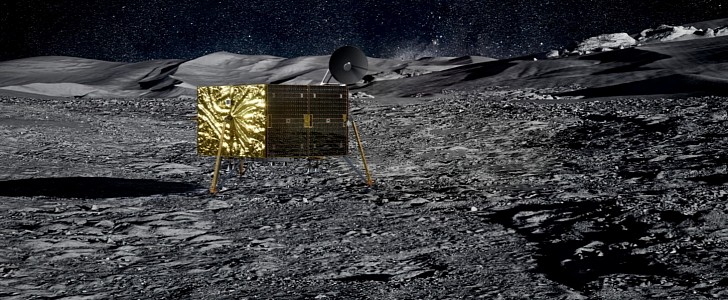By the middle of this decade, NASA plans to return astronauts to the Moon. Soon after, rovers and lunar bases will follow as the agency plans to establish a long-term presence on the satellite. But before that happens, it needs to make sure that everything that lands and stays on the Moon will survive the harsh environment.
Several companies, including NASA, are already working on developing the necessary technology that will allow humanity to return to our natural satellite and stay there for good. One of them is Masten Space Systems, which came up with an ingenious system that will help the agency sustain long-term missions on the lunar surface.
A night on the Moon is equivalent to 14 Earth days. That means temperatures can drop during that time period to -232 degrees Celsius (-387 degrees Fahrenheit). The problem is that science payloads require at least -40 degrees Celsius to function, and depending on the mission profile, they might need a continuous power supply to survive the freezing lunar nights.
The solutions that are currently used are lithium-ion batteries and alkaline fuel cells. And even though they do the job, they require complex fluid systems and have a short lifespan.
Masten's new system, called Nighttime Integrated Thermal and Electricity (NITE), relies on exothermic chemical reactions to produce both heat and power "through the oxidation of metals using propellant margin from the lander's propulsion system."
NITE is up to seven times lighter than an equivalent battery and can be attached as a payload to multiple types of machines, including landers or rovers. Several advantages that it brings include the ability to operate autonomously when temperatures go below a certain level. It can also be turned off throughout the lunar day to avoid overheating, and it's not afraid of lunar dust.
Moreover, NITE doesn't require power from the Sun to function, and it's capable of supporting operations for up to 12 months (depending on the type and quantity of oxidizer).
The company has already put NITE to the test, and it plans to show the world the finished product later this year. Masten also hopes to see it being tested on the Moon. That might happen sooner than you'd think because the company was awarded a NASA Tipping Point contract to advance the development of the NITE system.
A night on the Moon is equivalent to 14 Earth days. That means temperatures can drop during that time period to -232 degrees Celsius (-387 degrees Fahrenheit). The problem is that science payloads require at least -40 degrees Celsius to function, and depending on the mission profile, they might need a continuous power supply to survive the freezing lunar nights.
The solutions that are currently used are lithium-ion batteries and alkaline fuel cells. And even though they do the job, they require complex fluid systems and have a short lifespan.
Masten's new system, called Nighttime Integrated Thermal and Electricity (NITE), relies on exothermic chemical reactions to produce both heat and power "through the oxidation of metals using propellant margin from the lander's propulsion system."
NITE is up to seven times lighter than an equivalent battery and can be attached as a payload to multiple types of machines, including landers or rovers. Several advantages that it brings include the ability to operate autonomously when temperatures go below a certain level. It can also be turned off throughout the lunar day to avoid overheating, and it's not afraid of lunar dust.
Moreover, NITE doesn't require power from the Sun to function, and it's capable of supporting operations for up to 12 months (depending on the type and quantity of oxidizer).
The company has already put NITE to the test, and it plans to show the world the finished product later this year. Masten also hopes to see it being tested on the Moon. That might happen sooner than you'd think because the company was awarded a NASA Tipping Point contract to advance the development of the NITE system.






